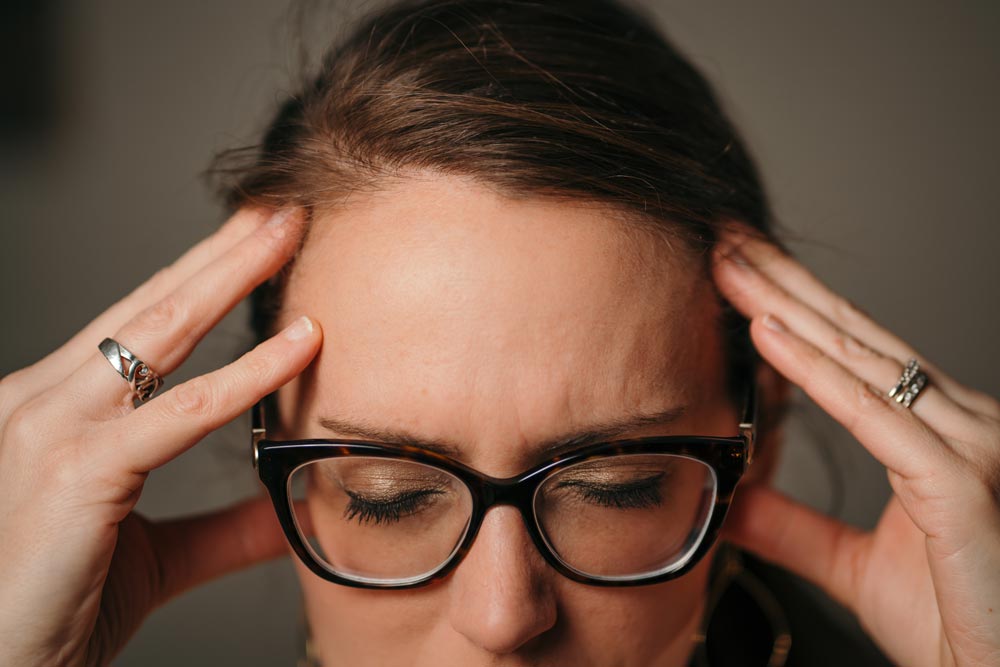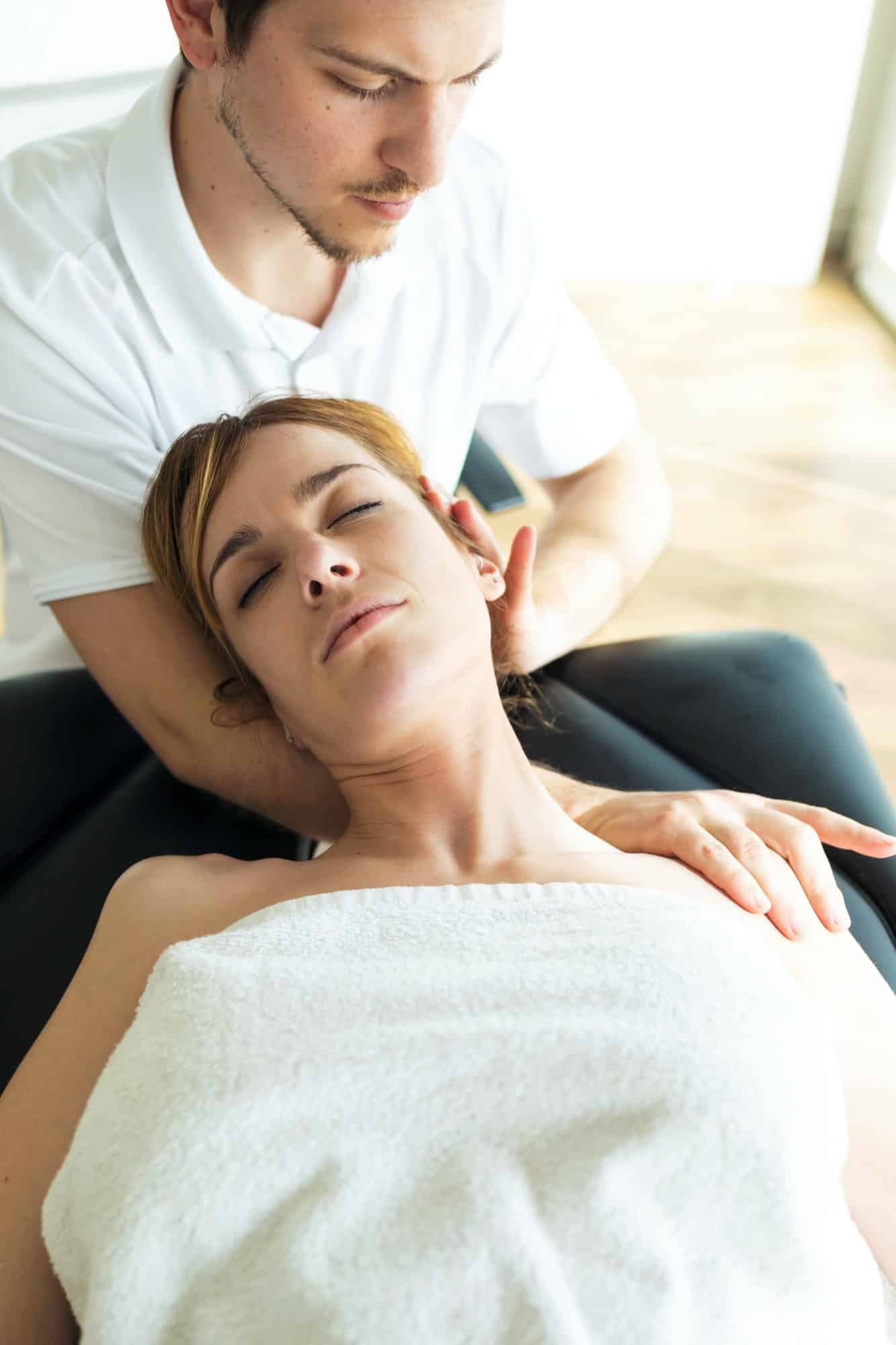Headache complaints
Headaches are a complaint that many people suffer from. Muscular tension headaches and migraines are the most common. Sometimes (too much) medication is the cause of headaches.
The physical therapist can help reduce or even eliminate headaches in some cases. Three types of headaches are described below. With the characteristics of each form and what treatment is appropriate for it.
Tension headache
Features
66% of people sometimes suffer from this type of headache.
Characteristics are bilateral (left and right) oppressive pain, which is mild in nature and does not worsen with physical exertion. There may be hypersensitivity to light and sound.
Cause
The cause of tension headaches is not yet fully known. However, it is certain that tension of the muscles is not a cause, although the name suggests otherwise. Stress (mental tension) is also not responsible for these headaches. The most likely explanation for tension headaches is an uninhibited transmission of signals from the brain to lower areas. Because this causes the number of stimuli to be higher than usual, normal stimuli are suddenly felt as pain.
Treatment
Research has shown that physical therapy is effective in treating tension headaches. Both dry needling and exercise therapy can reduce headaches. Exercise therapy focuses primarily on strengthening neck and upper back muscles. If the headache is accompanied by neck pain, this will also be addressed during treatment.
Migraine
Features
Migraines occur in both adults and children. These headaches become unilateral sensations and are usually throbbing in nature. There may be nausea, vomiting, hypersensitivity to light, sound or smells.
In 20% of cases, the headache phase is preceded by an aura. In this, a person sees stars, spots or flashes of light, and sometimes (part of) the field of vision may fail. Tingling or dull sensations may also occur in a hand, arm, part of the head or tongue.
Cause
Much is still unknown about the origins of migraine. It is known, however, that female hormones influence the onset of migraine, which is why migraine occurs more often in women than in men. It is also more common in certain families than others. Often several people within a family suffer from migraine. In addition, migraine and tension headaches often occur in combination.
Treatment
Because migraine is a common complaint, much research is being done on it. In recent years in particular, it appears that exercise therapy can help reduce the number of headache days. This involves training at a relatively light intensity. The training focuses on improving fitness.
As with tension headaches, treating the neck is often part of migraine treatment.
Cervicogenic headache
Features
Cervicogenic headaches are caused by a restriction in the movement of the neck. People with cervicogenic headache (CGH) experience pain on one side that can radiate into the neck, shoulder, arm and/or between the shoulder blades. It is very treatable by physical therapists.
Treatment
During the examination, the physical therapist will assess which part of the neck is not moving properly and then treat it. This will eliminate the cause of this type of headache.
Research and treatment
The physical therapist will assess your symptoms through an interview and focused examination. Then the diagnosis will be discussed with you and a personalized treatment plan will be drawn up.
Cost
Physical therapy is covered by your supplementary insurance. Don't have supplementary insurance? Then we apply the following rates.
GP/specialist referral
Would you like to make an appointment regarding one of the above complaints? For this you do not need a referral from your GP or specialist. You can contact us directly.
Within our practice, Evelien Renders and Vincent Kluitmans specialize in headache complaints.


